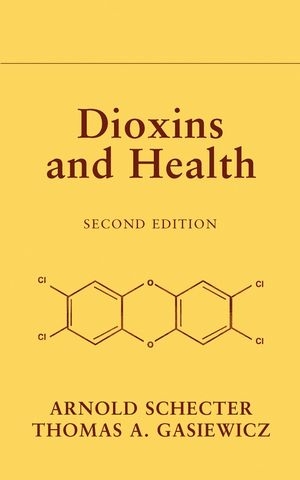
Dioxins and Health
John Wiley & Sons Inc (Verlag)
978-0-471-43355-2 (ISBN)
- Titel ist leider vergriffen;
keine Neuauflage - Artikel merken
Dioxins are the most potent, well known, and long lasting of the persistent organic pollutants (POPS), and are of great interest in public health, toxicology, chemistry, medicine, law, and to regulatory agencies worldwide. In the years since publication of the first edition of "Dioxins and Health", major advances have been made in human epidemiology as well as in animal studies. The second edition updates the science involved in the dioxin and PCB literature.
ARNOLD SCHECTER, MD, MPH, is Professor of Environmental Sciences at the University of Texas School of Public Health in Dallas, Texas. THOMAS A. GASIEWICZ, PhD, is the Chair of the Department of Environmental Health at the University of Rochester Medical Center in Rochester, New York.
Contributors.Preface.Chapter 1. Overview: The Dioxin Debate (Thomas F. Webster and Barry Commoner).Chapter 2. Production, Distribution and Fate of Polychlorinated Dibenzo-p-Dioxins, Dibenzofurans, and Related Organohalogens in the Environment (Roger K. Gilpin, et al.).Chapter 3. Dioxins and Dioxinlike PCBs ain Food (James R. Startin and Martin D. Rose).Chapter 4. Toxicology of Dioxins and Dioxinlike Compounds (Jeanelle M. Martinez, et al.).Chapter 5. Health Risk Characterization of Dioxins and Related Compounds (Linda S. Birnbaum and William H. Farland).Chapter 6. Pharmacokinetics of Dioxins and Related Chemicals (James R. Olson).Chapter 7. Dose - Response Modeling for 2,3,7,8-Tetrachlorodibenzo-p-dioxin (Michael J. DeVito, et al.).Chapter 8. Immunotoxicology of Dioxins and Related Chemicals (Nancy I. Kerkvliet).Chapter 9. Developmental and Reproductive Toxicity of Dioxins and Related Chemicals (H. Michael Theobald, et al.).Chapter 10. Effects of Polychlorinated Biphenyls on Neuronal Signaling (Richard F. Seegal).Chapter 11. Experimental Toxicology: Carcinogenesis (Justin G. Teeguarden and Nigel J. Walker).Chapter 12. Ah Receptor: Involvement in Toxic Responses (Thomas A. Gasiewicz and Sang-ki Park).Chapter 13. Biochemical Responses to Dioxins: Which Genes? Which Endpoints? (J. Kevin Kerzee, et al.).Chapter 14. Evolutionary and Physiological Perspectives on Ah Receptor Function and Dioxin Toxicity (Mark E. Hahn).Chapter 15. Dioxin Toxicity and Aryl Hydrocarbon Receptor Signaling in Fish (Robert L. Tanguay, et al.).Chapter 16. Exposure Assessment: Measurement of Dioxins and Related Chemicals in Human Tissues (Arnold Schecter, et al.).Chapter 17. Human Health Effects of Polychlorinated Biphenyls (Matthew P. Longnecker, et al.).Chapter 18. Epidemiological Studies on Cancer and Exposure to Dioxins and related Compounds (Lennart Hardell, et al.).Chapter 19. Reproductive and Developmental Epidemiology of Dioxins (Sherry G. Selevan, et al.).Chapter 20. Health Consequences of the Seveso, Italy, Accident (Pier Alberto Bertazzi and Alessandro di Domenico).Chapter 21. The Yusho Rice Oil Poisoning Incident (Yoshito Masuda).Chapter 22. The Yucheng Rice Oil Poisoning Incident (Yueliang L. Guo, et al.).Index.
| Erscheint lt. Verlag | 22.7.2003 |
|---|---|
| Zusatzinfo | Illustrations |
| Verlagsort | New York |
| Sprache | englisch |
| Maße | 160 x 235 mm |
| Gewicht | 1436 g |
| Einbandart | gebunden |
| Themenwelt | Medizin / Pharmazie ► Medizinische Fachgebiete ► Arbeits- / Sozial- / Umweltmedizin |
| Studium ► 2. Studienabschnitt (Klinik) ► Pharmakologie / Toxikologie | |
| Studium ► Querschnittsbereiche ► Klinische Umweltmedizin | |
| Naturwissenschaften ► Biologie ► Ökologie / Naturschutz | |
| Naturwissenschaften ► Chemie | |
| Technik ► Umwelttechnik / Biotechnologie | |
| ISBN-10 | 0-471-43355-1 / 0471433551 |
| ISBN-13 | 978-0-471-43355-2 / 9780471433552 |
| Zustand | Neuware |
| Haben Sie eine Frage zum Produkt? |
aus dem Bereich


